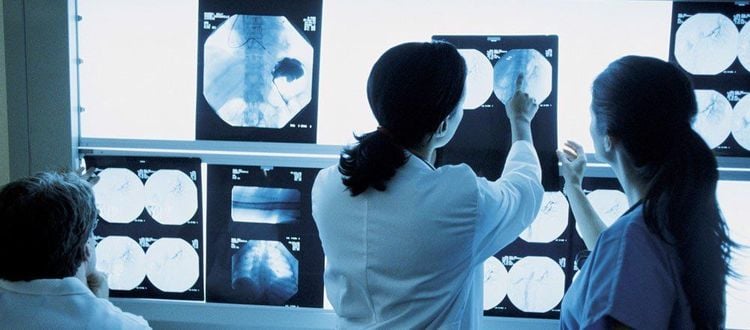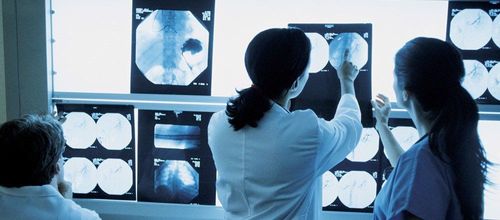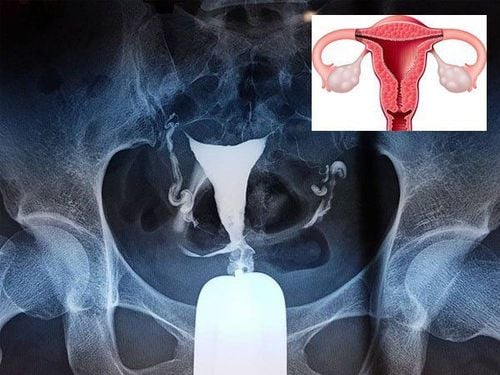This is an automatically translated article.
The article was written by Master, Doctor Hoang Van Lan Duc - Doctor of Radiology - Department of Diagnostic Imaging and Nuclear Medicine - Vinmec Times City International General Hospital.AI has been and is being applied in many fields, including Medicine, especially in diagnostic imaging. So, what issues should we consider when applying artificial intelligence software - AI in diagnostic imaging? A multinational group of authors has come up with new guidelines, with 10 problems based on answering 10 questions. The following article will cover the first two issues.
1. Problems encountered when applying AI in diagnostic imaging
The aforementioned guidelines were published in an online paper March 5, 2021 in the European Journal of Radiology, led by a team of authors led by Dr. Patrick Omoumi, of the University of Lausanne in Switzerland. . The content of the article is to help doctors as well as medical managers evaluate and select the AI software in diagnostic imaging that best suits their needs. The research team has named these guidelines Evaluating commercial AI solutions in radiology, abbreviated as ECLAIR (Evaluating commercial AI solutions in radiology).According to the authors, many factors should be included in the evaluation of applications of this complex software, such as technical and financial evaluation and considerations, as well as quality and safety factors. whole. Issues to consider in the assessment include: Relevancy of the solution from the point of view of each stakeholder, issues related to performance and recognition, usability and integration, regulatory and legal aspects as well as financial services and support”.
In their paper, the authors provided a list of details to check and consider when evaluating commercial AI software in diagnostic imaging, as well as a list of the top 10 questions to answer. words:
1.1. What problem does AI software solve and who is it designed for?
1.2. What are the potential benefits and risks of AI and who does it affect?
1.3. Has the AI software's algorithm been rigorously and independently validated?
1.4. How can AI be integrated into clinical workflows and is the solution compatible with existing software? For example, can it be integrated into the hospital's PACS (image storage and transmission system) network?
1.5. What are the requirements for information technology infrastructure?
1.6. Is the AI application compliant with the medical device and personal data protection regulations of the country of use, and what kind of regulation is it subject to?
1.7. Have economic analyzes such as return on investment (ROI) been performed?
1.8. How is product maintenance guaranteed?
1.9. How is training and user control handled?
1.10. How will potential problems or erroneous results be handled?

2. Answer the first two questions
As listed, there are many problems encountered when applying AI to diagnostic imaging. However, within the framework of this article, the author would like to mention only the first two issues.2.1. What problem does AI software solve and who is it designed for? When assessing the relevance of an AI solution to the clinical practice of each case, the fundamental questions to answer are what specific problem (intended use) should it solve, under what conditions? (indication for use) and requires a clear clinical indication (use case).
Basic points to consider include:
What diseases or symptoms are diagnosed, treated, and monitored by AI? Who are the direct users of the AI software: Radiologists, clinical, surgical,... as well as their qualifications and training requirements? Principles and operation methods of AI-related devices and vehicles? What is the purpose of using AI as a research tool or for clinical use? Can it be used as a solution in cross-checking between AI and radiologists (double check)? For example, the chest X-ray film reading will be performed simultaneously between the radiologist and the AI to avoid missing lesions. Is AI used for classification in clinical examination or for quality control or some other function? Can it provide diagnostic, prognostic or quantitative data (such as lesion size,...)? Does AI provide useful information that was not available before? Are there other patient selection criteria, indications, contraindications, or warnings? 2.2. What are the potential benefits and risks of AI and who does it affect? Benefits can be assessed from the perspective of the patient, radiologist, clinician, hospital, insurance company, healthcare system, or society as a whole. The perspective from each of the above points has its own measure. Ideally, benefit assessment should be based on evidence, including scientific studies and economic benefit analyses.
For patients, it is necessary to analyze whether AI helps or impacts their diagnosis, prognosis or improves their quality of life.

For organizations like hospitals, companies, insurance, AI software can improve physician efficiency, use resources more efficiently, process care faster, and reduce the risk of errors. Economic assessments such as cost-benefit analysis, cost effectiveness, return on revenue (ROI),... are also calculated when applying AI to healthcare.
For society, the potential benefits that AI brings should be considered such as: Reducing healthcare costs, increasing access to medical services, reducing disparities in service quality, and finally also increase life expectancy and quality of life.
The risks associated with the use of AI systems can include misdiagnosis, affecting the radiologists' normal workflow, or possibly being too dependent on the results of the reading AI. but forget the basic visual signs,...
Follow the website: Vinmec.com regularly to update many other useful information.
Please dial HOTLINE for more information or register for an appointment HERE. Download MyVinmec app to make appointments faster and to manage your bookings easily.














